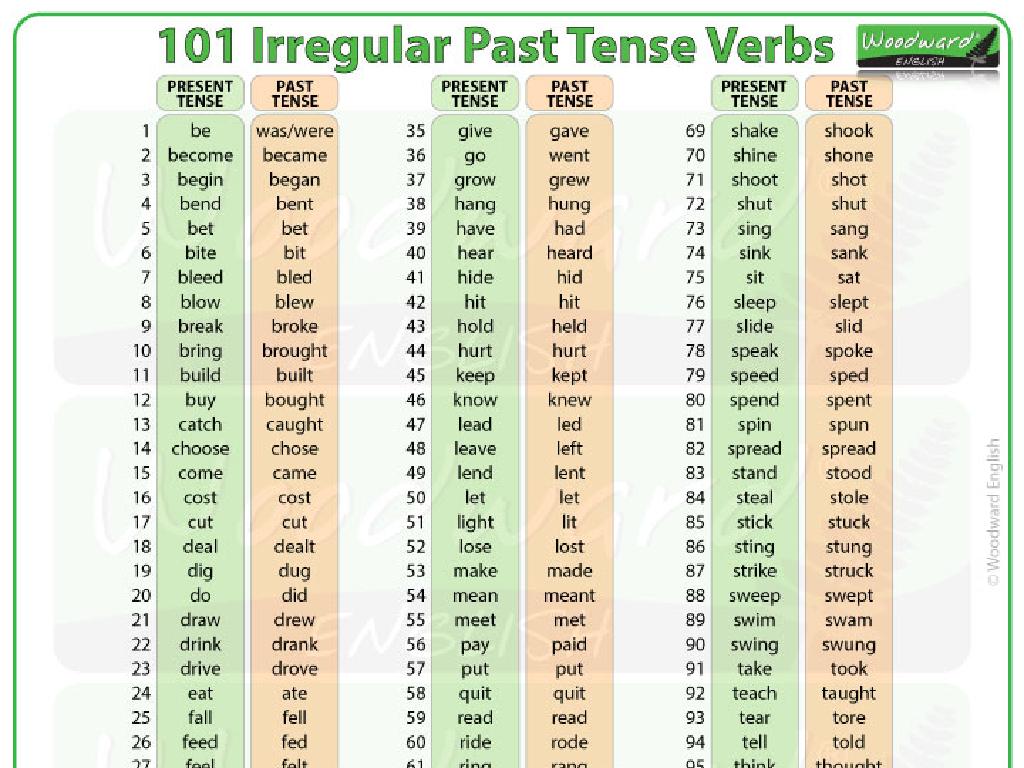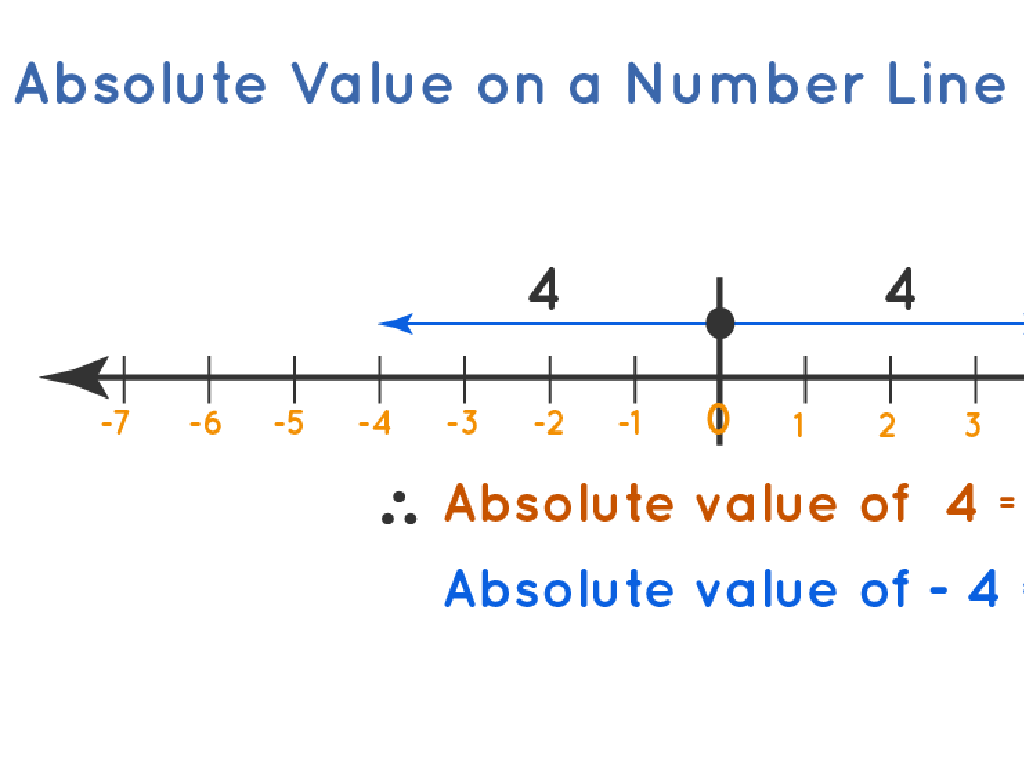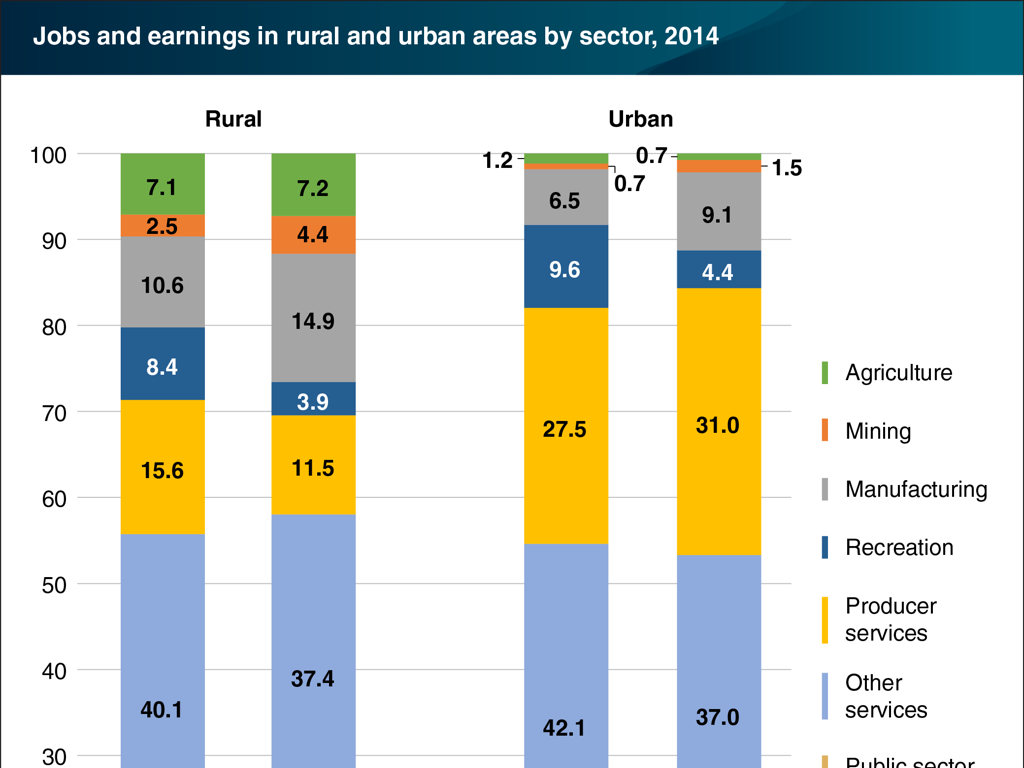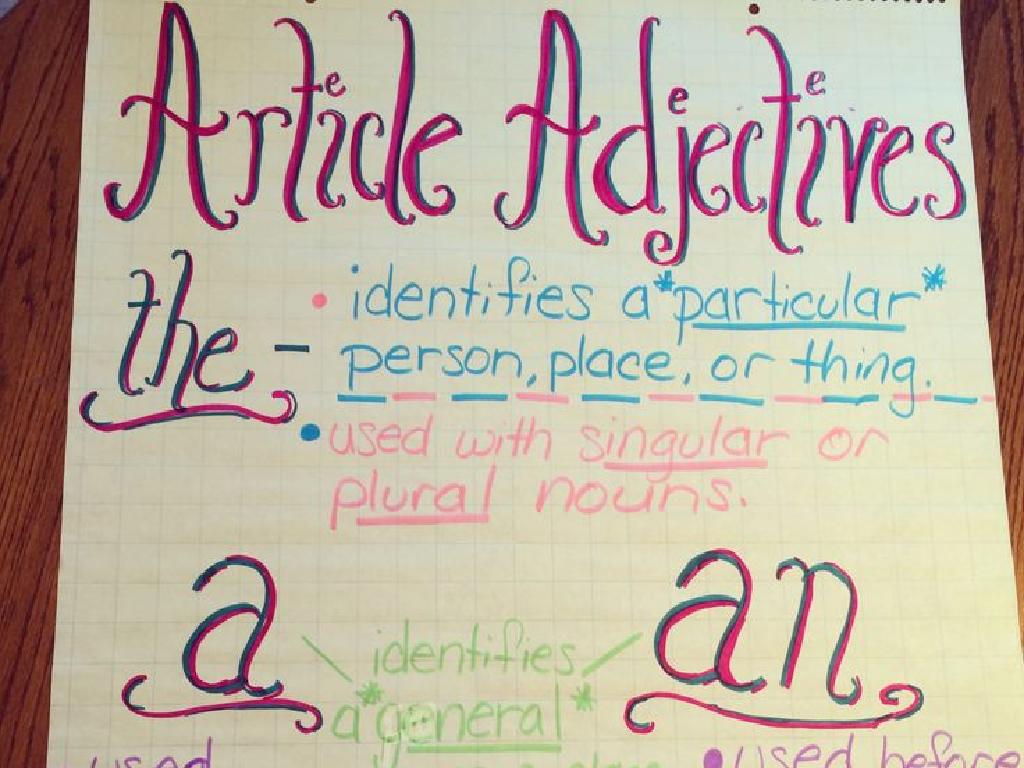Check Registers
Subject: Math
Grade: Sixth grade
Topic: Financial Literacy
Please LOG IN to download the presentation. Access is available to registered users only.
View More Content
Introduction to Financial Literacy
– Understanding money’s role
– Money is used to buy goods and services.
– Defining financial literacy
– Financial literacy means knowing how to manage money.
– The importance of financial skills
– Skills like budgeting, saving, and investing.
– Financial literacy for the future
– Helps you make smart money choices as you grow.
|
This slide introduces the concept of financial literacy to sixth-grade students, emphasizing the importance of understanding money and its role in everyday life. Financial literacy is defined as the ability to manage one’s financial resources effectively, which includes skills such as budgeting, saving, and investing. It’s crucial for students to grasp why financial literacy is important for their future, as it empowers them to make informed and effective decisions with their money. This foundational knowledge sets the stage for more in-depth learning about specific financial tools and concepts, such as check registers, which will be covered in subsequent lessons.
Understanding Check Registers
– Define a Check Register
– A record book to track checking account activity
– Purpose of a Check Register
– Helps manage finances & avoid overdraft fees
– Real-life Check Register Example
– Example: Recording a check for a school fundraiser
|
A check register is a booklet or spreadsheet used to track checking account transactions, including deposits, withdrawals, and transfers. It’s essential for maintaining an accurate balance and financial awareness. Instruct students on the importance of recording every transaction to avoid overdraft fees and manage their money effectively. Provide a relatable example, such as using a check register to record a check written for a school fundraiser, to illustrate the practical application of this tool in everyday life. Encourage students to ask questions and share their own experiences with money management.
Understanding Check Registers
– Date Column: Track transactions
– Record the date of each transaction
– Description Column: Who & what for
– Note the recipient and purpose of each transaction
– Payment/Debit Column: Money out
– Write down amounts you spend
– Deposit/Credit Column: Money in
– Write down amounts you receive
– Balance Column: Current funds
– Keep track of your available money after each transaction
|
This slide introduces students to the components of a check register, an essential tool for managing personal finances. The date column is used to record when transactions occur. The description column helps remember who was paid or where the money came from, and for what purpose. The payment/debit column is for recording any money spent, while the deposit/credit column is for money that is received. Lastly, the balance column is crucial for keeping an ongoing record of how much money is available in the account after each transaction. Encourage students to practice filling out a check register with hypothetical or real-life examples to understand the importance of keeping track of their finances.
Mastering Check Registers
– Steps to record transactions
– Write date, description, and amount for each transaction.
– Tips for accurate records
– Always double-check figures; record transactions immediately.
– Common mistakes to avoid
– Forgetting to record or miscalculating the balance.
– Practice with examples
– Use sample transactions to apply these steps.
|
This slide aims to teach students the importance of maintaining a check register as part of financial literacy. Start by explaining the step-by-step process of recording each transaction, including the date, transaction description, and amount. Emphasize the importance of accuracy and the habit of recording transactions as soon as they occur to prevent discrepancies. Discuss common errors such as forgetting to record a check or an ATM withdrawal, and miscalculating the running balance. Conclude with a class activity where students practice recording transactions in a check register using example scenarios, reinforcing the concepts taught.
Practicing with Check Registers
– Record a sample transaction
– Let’s write down a check payment for $50
– Understand transaction impact
– See how this payment affects your total balance
– Check work for accuracy
– Double-check entries to prevent mistakes
– Discuss importance of accuracy
– Mistakes can lead to overdraft fees or budget issues
|
This slide is designed to engage students in a hands-on activity where they will learn how to record transactions in a check register. Start by demonstrating how to record a sample transaction, such as writing a check for $50 for a school field trip. Explain how each transaction affects the account balance, emphasizing the importance of updating the balance after every entry. Encourage students to always double-check their work to ensure accuracy, as errors can lead to financial complications like overdraft fees. Discuss the real-life implications of maintaining an accurate check register, such as staying within budget and avoiding financial penalties.
The Importance of Keeping a Check Register
– Prevent overdraft fees
– Avoid spending more money than you have in your account.
– Monitor spending habits
– See where your money goes and learn to budget.
– Verify bank records accuracy
– Make sure your bank statements match your own records.
– Financial responsibility
|
A check register is a tool that helps you keep track of all the transactions in your bank account. It’s essential for avoiding overdraft fees, which occur when you spend more than what’s available in your account. By keeping a check register, students can learn to monitor their spending habits, which is a crucial skill for financial literacy. It also serves as a personal record to ensure that the bank’s records are accurate. Teaching students to maintain a check register encourages them to be responsible with their finances and to understand the importance of keeping track of their money.
Class Activity: Create Your Own Check Register
– Receive a blank check register
– Record sample transactions
– Use teacher-provided transactions to practice
– Calculate your final balance
– Add deposits and subtract withdrawals
– Understand check register use
– Learn how check registers help manage finances
|
In this interactive class activity, students will each receive a blank check register to gain hands-on experience with financial record-keeping. Provide a list of sample transactions, including both deposits and withdrawals, and guide students through recording these in their registers. They will then calculate their final balance, reinforcing arithmetic skills. Emphasize the importance of accuracy in maintaining a check register. Possible activities include simulating a shopping experience, tracking a week’s allowance, or managing a budget for a school project. This exercise will help students understand the practical use of check registers in everyday financial management.
Check Registers: Review & Questions
– Recap of today’s lesson
– Time for your questions
– Any doubts or curiosities? Now’s the time to ask!
– Real-life application
– How might you use a check register in daily life?
– Understanding financial responsibility
|
This slide aims to consolidate the day’s learning about check registers and encourage student engagement through questions. Begin with a brief recap of the key points covered in the lesson. Open the floor to students, allowing them to ask questions or express any confusion they may have. Discuss practical applications of maintaining a check register, such as budgeting, tracking expenses, and avoiding overdraft fees. Emphasize the importance of financial responsibility and how the skills learned today can benefit them in the future. Encourage students to think of scenarios where they might need to use a check register, fostering a deeper understanding of the concept.
Homework: Tracking Spending with a Check Register
– Take home a check register worksheet
– Record all spending for a week
– Write down everything you spend money on
– Note each transaction detail
– Include date, amount, and what you bought
– Bring the completed worksheet to class
|
This homework assignment is designed to give students practical experience with managing finances using a check register. They will take home a worksheet that mimics a real check register. Throughout the week, students are expected to record every purchase or expense they make, noting the date, amount, and a brief description of the transaction. This exercise will help them understand the importance of tracking their spending and the role of a check register in maintaining financial records. In the next class, we will review the worksheets together, discuss different spending habits, and reflect on the importance of budgeting and financial planning at a young age.






